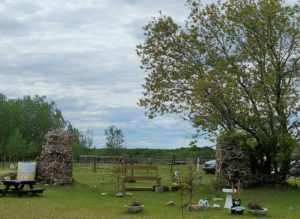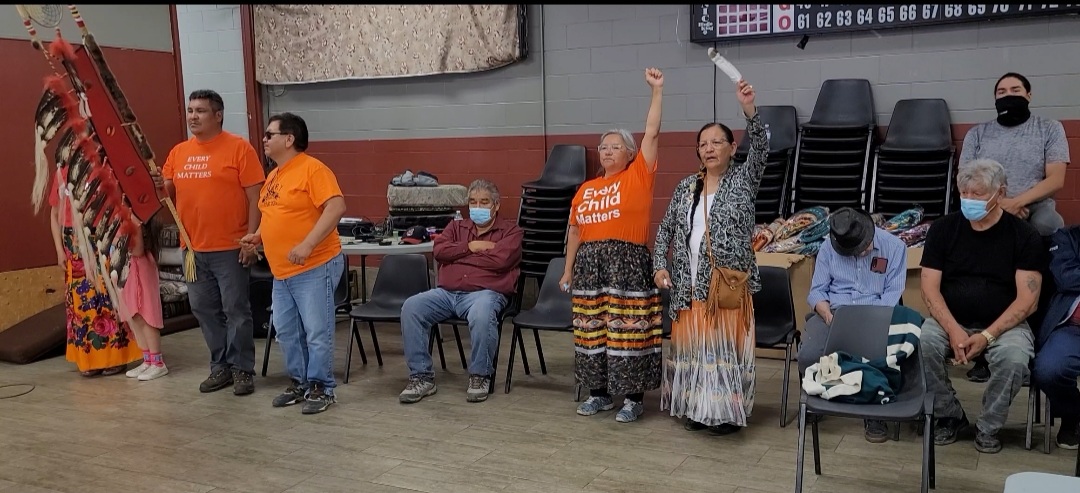Hundreds of people walked in the Onion Lake community on Monday in memory of the Kamloops 215.
Following the gruesome find of the remains of some 215 children at the site of a former residential school in Kamloops, B.C., Canada has been coming to terms with last Thursday’s discovery.
It’s a pain residents of Onion Lake Cree Nation know all too well. At the height of the Residential School system, Onion Lake had four schools in operation. They are all burned to the ground and each time they were destroyed, they were rebuilt. Today, all that’s been left is the stone pillars that held the gates of the St. Barnabas residential school.
The memorial walk moved slowly from Chief Taylor Elementary School to the Onion Lake Arena. Community members brought greetings as residents mourned the children.
The organizers then invited some 30 residential school survivors to come sit at the front, where they were honoured with a smudging ceremony and presented with comfort blankets.
Ruth Lewis whose Cree family name is Littlewolf was taken with her siblings when she was five years old to the St. Anthony’s Residential School. She recalls a vehicle pulling up in front of their home and being taken away to a large building.
“They stripped us of our clothing and they took a scissors and cut off our braids. That was my first trauma experience. As first nations people, we take pride in our hair and that’s a gift and our tradition.”
Lewis says she cried. She was really upset that her hair was cut. Her mother used to wash her hair and prayed as she washed each strand. Lewis recalls she got hit on her head for crying. She describes being scrubbed with lye soap and the brushes that were used to scrub the floors. It was the first time she was abused and it would not be the last.
Lewis has visited the Residential School in B.C. and is familiar with the area. She says when she heard the news of the discovery of human remains, a lot of memories came flooding back as she went into shock.
“I cried for the children. I spent so much time thinking of the residential school in our area and the possibilities of having some buried here as well. I remember there used to be a big incinerator at the back of the building. I remember a few times you walk by there and you could smell. It was just a horrific smell.”
Lewis recalls that smell with a facial expression that makes the past and the present collide. She says a tragedy like the discovery of the remains of the 215 children in Kamloops is bringing a perspective to teach non-First Nations people about the history of First Nations people.
Lewis says when she left the residential school she was just the number that she had been given. She had no identity. She had been stripped of not just the clothes on her back, but her language and her way of life. She had been taken away from her family at such a tender age that she was even unaware that she had siblings. That disconnect remains with her family to this day.
Lewis honoured the survivors in her family by sharing the names of her siblings who were in residential school beginning with the eldest Linda who spent 10 years, Russel and Joe Pathayken, Glen, Wanda, Wayne, Connie and and her brother Bernard Littlewolf, who has passed away.
Like so many others her healing journey has been in overcoming the pain and stigma and not succumbing to the trauma that has seen many in her community turn to drugs and alcohol to cope.
Lewis acknowledges that the discovery of the Kamloops 215 has opened a lot of wounds, but she is hopeful as people face their feelings they can find healing. She calls upon Canada to learn about the past.
“They don’t know the history of the First Nations people as we were the care takers of this land and how the government took over. They took over to create this genocide of our people because they wanted the land. We are still dictated by the government, but yet the government will not acknowledge what they did to get to where they are right now.”



